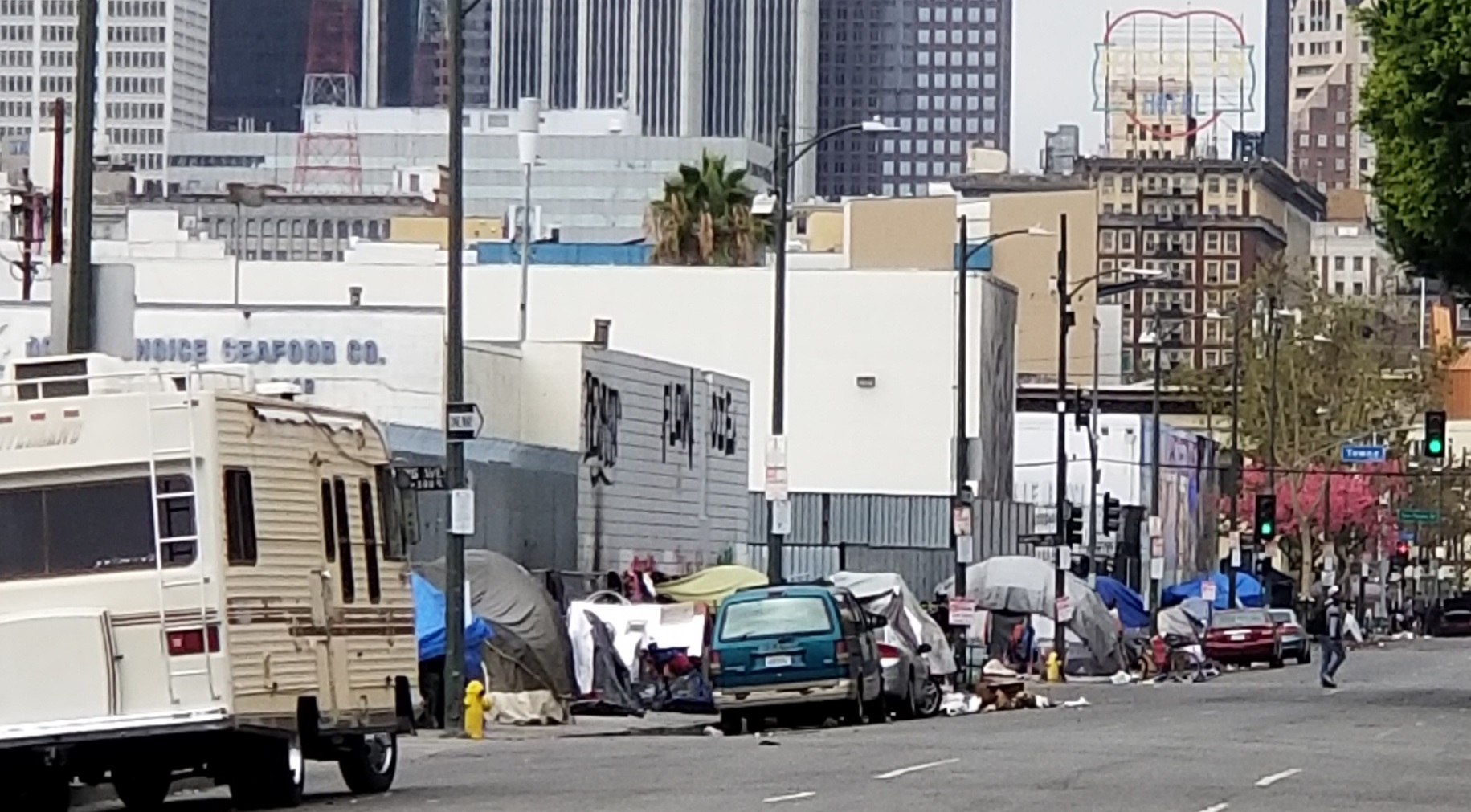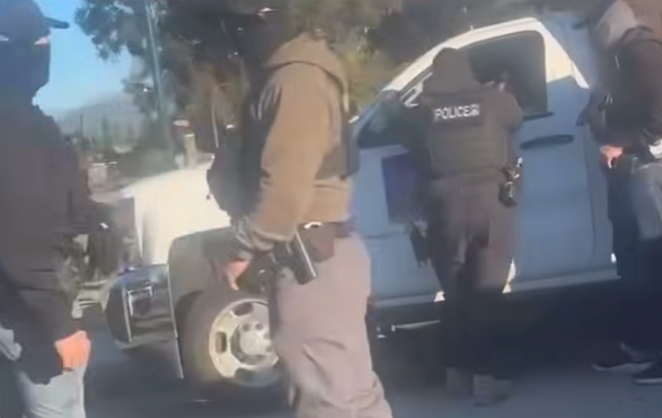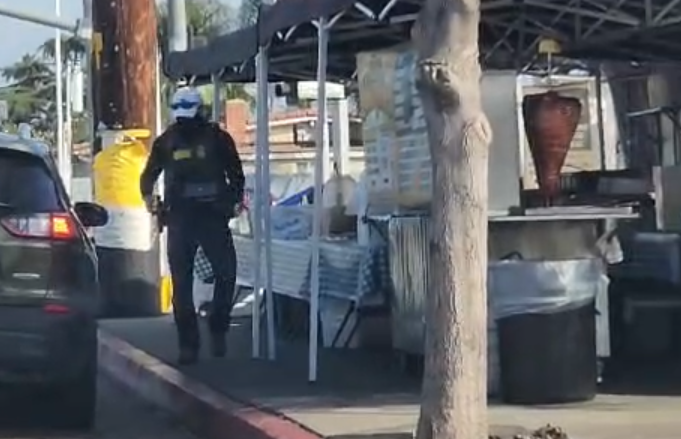[dropcap size=big]O[/dropcap]n a cloudy Sunday afternoon in downtown Los Angeles, Eric, a middle-aged homeless man, is busy arranging his tent and other belongings on East 7th Street near San Julian in Skid Row. He told L.A. Taco he isn’t packing up his tent and other possessions, even though his belongings potentially could be seized by the city, according to a slew of notices posted around Skid Row.
“I don’t have any ‘bulky items’ the city would want,” Eric said. “Anyways, why would the city take what little I got when there are those big tents across the street?”
Skid Row is replete with semi-permanent structures. Tents and lean-tos are common place, many structurally bolstered with thick rope and heavy blue tarps. Eric’s 4-person pump tent looked puny by comparison.
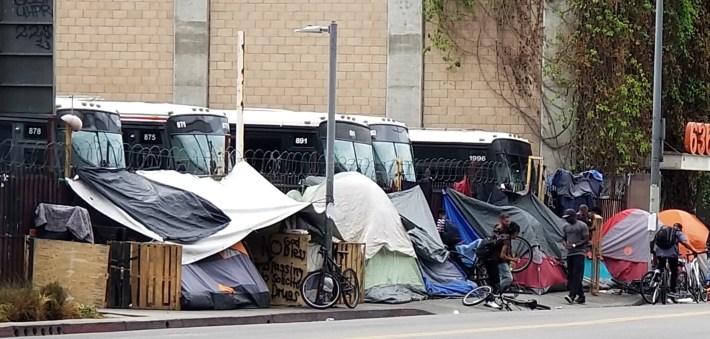
This week, city workers will begin cleaning up L.A. streets in the general vicinity of Skid Row. L.A. Sanitation posted the notices to request the area’s homeless to “Please remove all personal belongings, including bulky items.” And the note goes on to warn: If belongings are not removed “from sidewalks, alleys, parks and public access areas, [they] will be removed by the city.”
“We’re going to have folks down there [Tuesday] morning at 6 am in preparation to document every little thing in the event we need to bring litigation once again against the city of Los Angeles,” Pete White, executive director and founder of L.A. Community Action Network, told L.A. Taco. “It’s imperative that people are secure in their property rights, which is consistent with the U.S. Constitution.”
In April 2016, a federal judge said the city can’t seize the personal belongings of homeless people, unless it’s contraband, crime evidence, hazardous material, or property that poses public health and safety issues. The suit was brought by homeless individuals and two advocacy groups, including the Community Action Network.
This time, the sweep through Skid Row comes shortly after the public was warned of an alarming outbreak of typhus by the L.A. County Public Health Department in early October. More people have been falling sick with typhus in Los Angeles County over the last decade than ever before, according to a recent L.A. Times report.
“Typhus is endemic in Los Angeles County and, in recent years, the average number of reported cases has doubled to nearly 60 cases per year. In 2018, there have been 63 cases of typhus countywide,” said County Public Health in a Oct. 12 press release.
Nine of those cases of typhus occurred in downtown Los Angeles, and six of them were of homeless people. Twenty cases were reported in Pasadena this year, far more than the five usually seen annually in that city. Public health officials detected four new flea-borne typhus cases in the Willowbrook area south of the 105 on top of the “outbreak involving several cases in downtown Los Angeles.”
RELATED: Cases Of Flea-Borne Typhus in L.A. County Jump To 57 ~ Pasadena Is Calling It ‘Epidemic Levels’
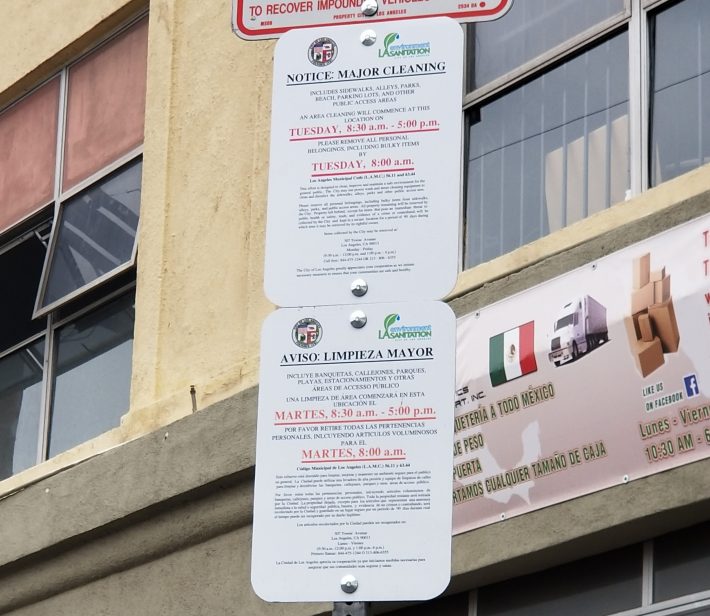
[dropcap size=big]T[/dropcap]here is no solid explanation for why there are so many more cases now, but the rise in homelessness has been suggested as a major cause. Last week, a huge sprawling pile of rat-infested trash on Ceres Ave. near 8th Street and uncomfortably close to the Produce District in downtown L.A. led to media coverage suggesting filthy streets like that were attracting flea-borne rats.
The reports likely prompted Mayor Eric Garcetti to take action. Days later, Garcetti pledged $300,000 to increase street cleaning downtown.
The outbreak has also fueled debates about homelessness and housing. While some fear that won’t be enough to curb the growing number of cases and clear out the trash, homeless advocates working in Skid Row say that fear could be exploited to justify seizing the few personal belongings owned by people living on the street.
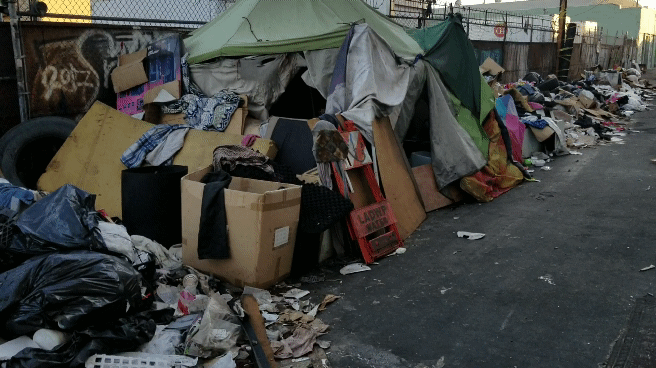
Jazmine Perialoza, a clerk at Tres Estrellas de Oro, a passage bus company that caters to Spanish-speaking residents, said she had not seen city authorities seize the possessions of homeless people when the city does its periodic street cleaning. Perialoza told L.A. Taco that she has been working on East 8th Street for almost a year.
L.A. Sanitation doesn’t usually remove the belongings of homeless people when they do periodic clean-ups, said David Garrett, a security guard at one of the homeless shelters nearby San Julian Park on East 5th Street. Garrett has 16 years experience working on Skid Row. But given news about a typhus outbreak, he told L.A. Taco he thinks this time could be different.
But other homeless advocates questioned whether protecting the property of homeless people was ultimately a worthwhile effort.
“Is it good to spend time defending that or is it better to take people to the county and asking, ‘Why is it like this? Why is more not being done?’,” said James Worley, the creator of HomelessLivesMatter, a YouTube channel dedicated to documenting lives of people living on the streets. “You can’t just mention this [typhus] epidemic is spreading without mentioning the facts of what’s helping it spread [or] why it’s getting so bad.”
